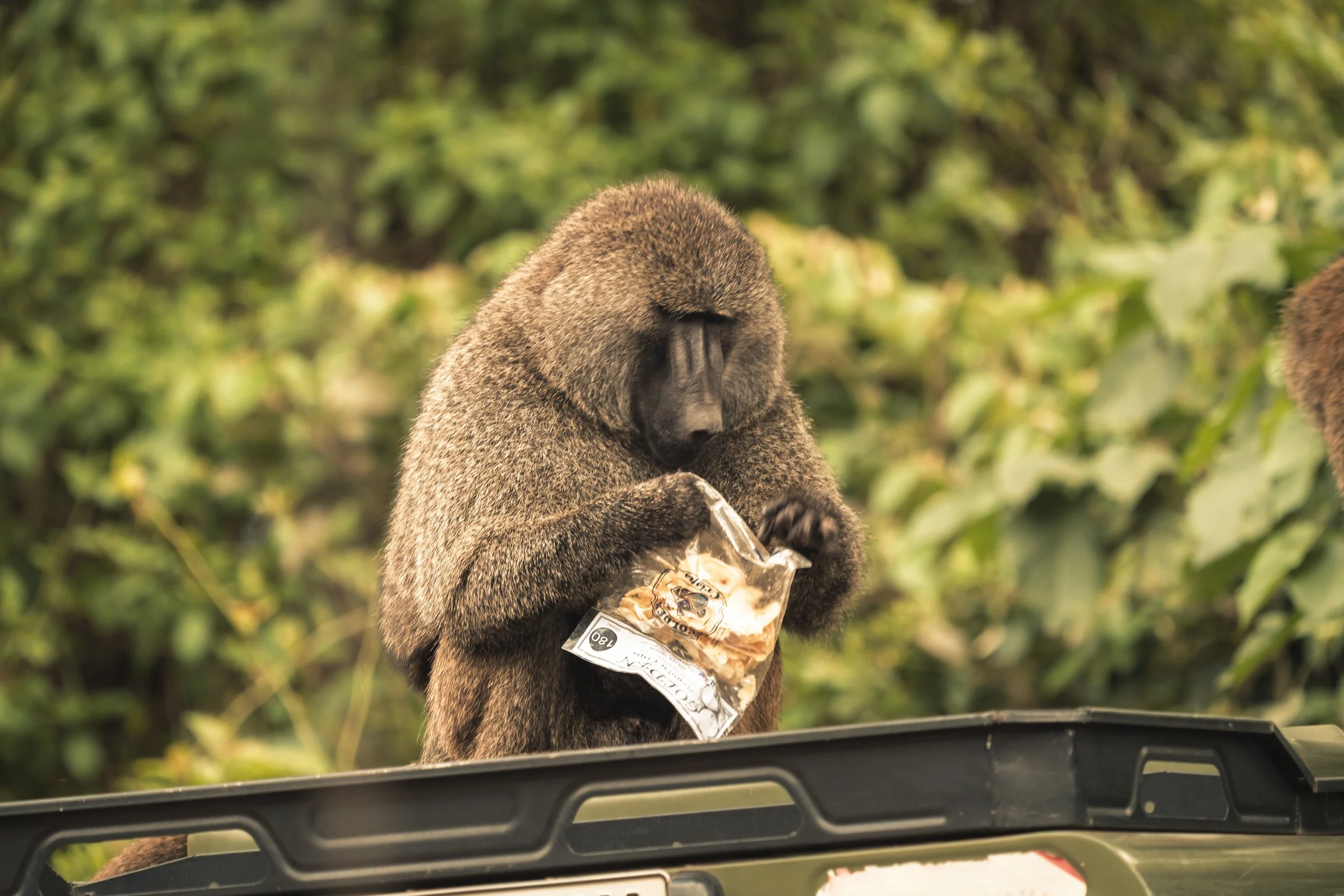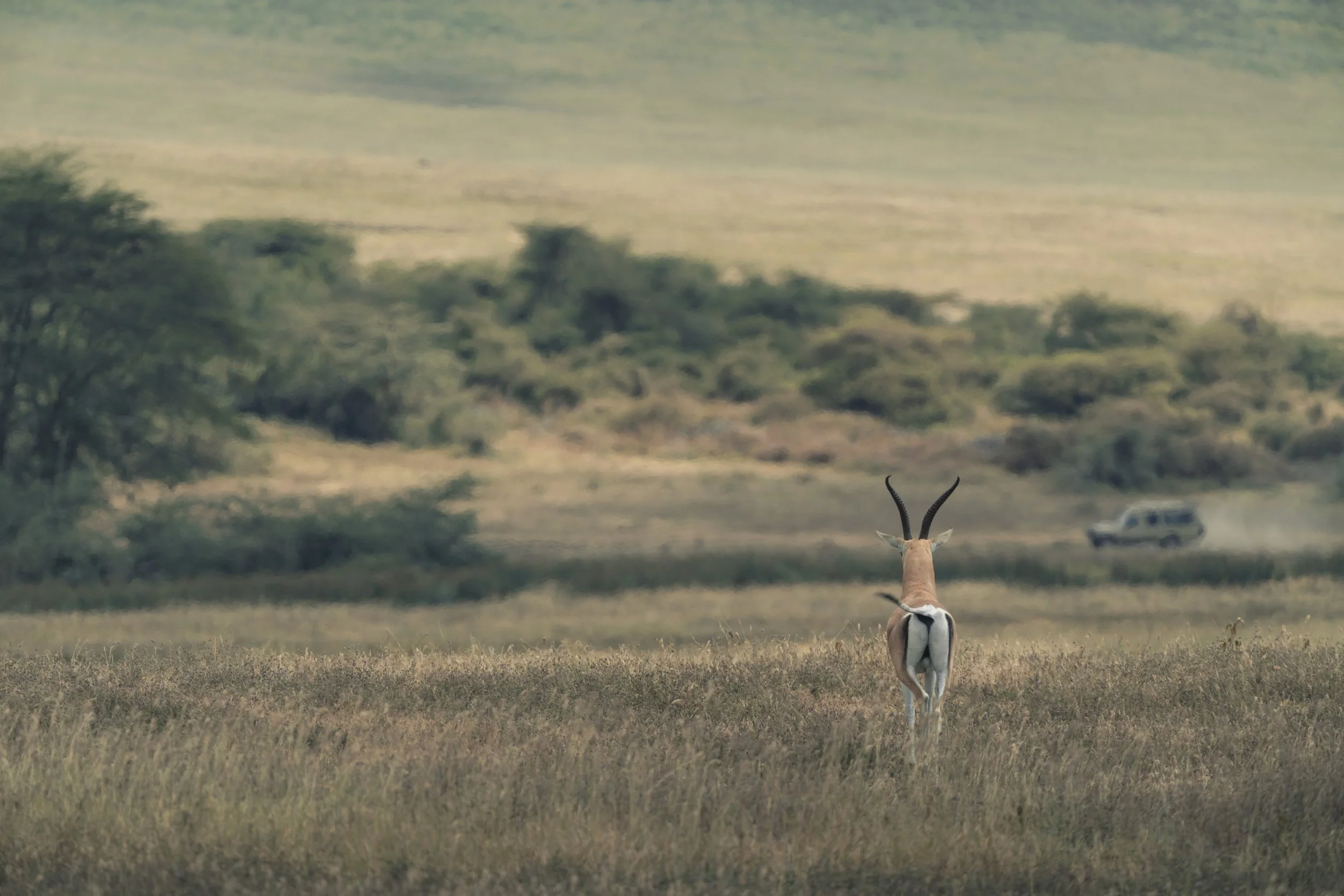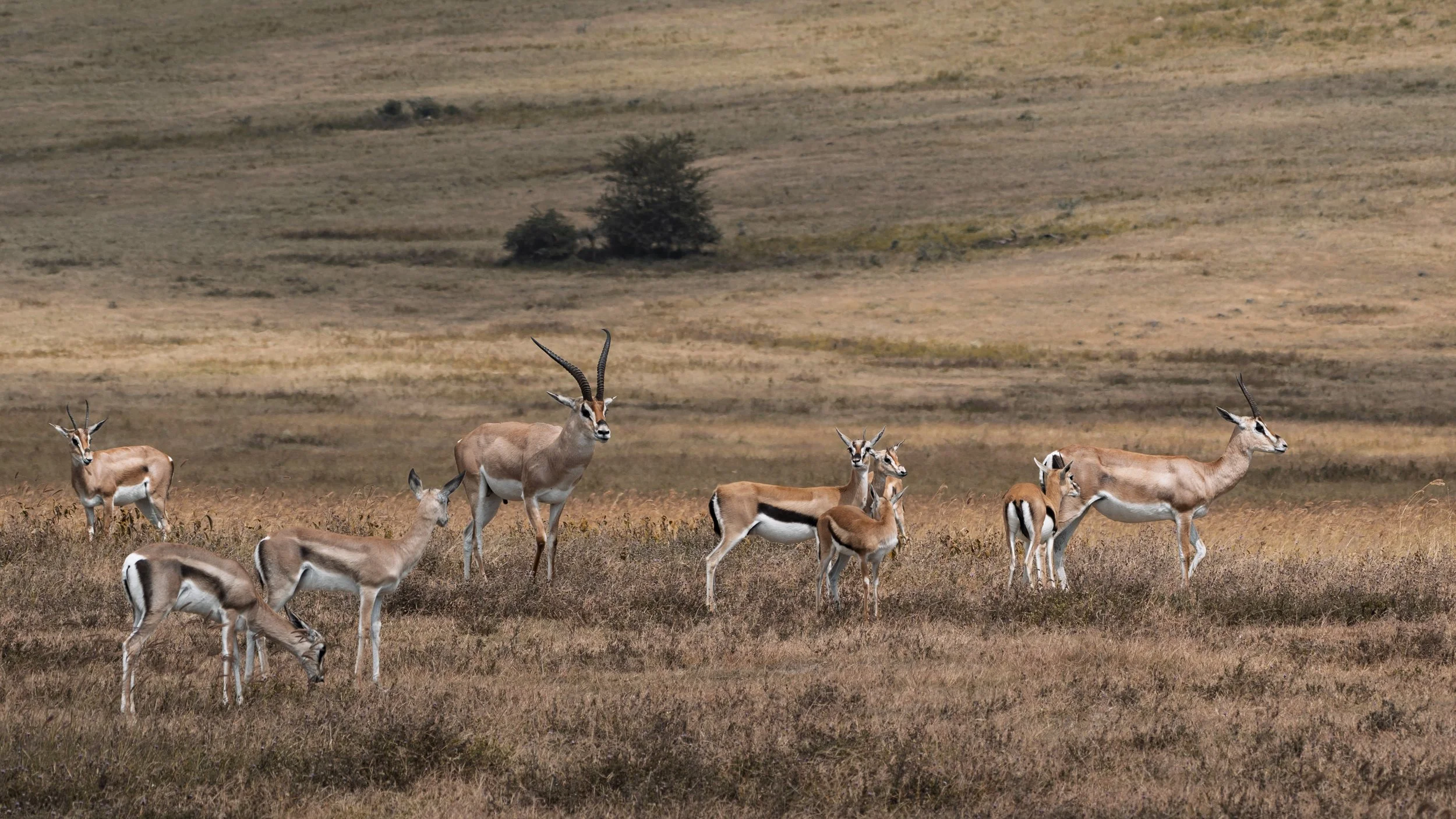Ngorongoro
“ Ngorongoro feels like a world of its own. A deep green bowl full of life. The day starts with ginger to fight the cold and ends with a rare moment. ”
Exciting start
After a wonderful night's sleep, I unfortunately don't wake up feeling completely fit. A cold, I think. At breakfast, Jabiri hands me a large mug of fresh, spicy ginger tea. In addition, I am given a piece of raw ginger with the advice: "Bite off pieces and chew slowly. Then you will be better tomorrow." I hope so.
Ginger is known here as a home remedy for everything from sore throats to nausea, so it is not uncommon in Tanzania to use it as a medicine instead of pills.
Cowbell
We leave for the Ngorongoro crater to spend the morning there. Yesterday I asked Jeroen how the crater was formed, to which he corrected me: Ngorongoro is not a real crater, but a caldera – the collapsed roof of a volcano, formed after an eruption, about two to three million years ago. Jabiri adds that “Ngorongoro” means 'cowbell' in Maasai, after the sound the bells of their cattle make.
When we arrive at the entrance, we are immediately struck by baboons everywhere. They walk on the ground, sit on roofs and in the bushes, and hang around the cars as if it were their territory – which it actually is. Jabiri urges us to close the windows and keep a close eye on the doors. These monkeys are so used to tourists that they know exactly when to seize their chance.
We meet Abu, the guide who was on the road with my cousin Loes last week. Thanks to her and my aunt Veronique we ended up at Gama Tours. We saw on Instagram that they had a great experience. My aunt is returning in January 2026 to see the migration - something to be jealous of.
Not much later we experience with our own eyes why the windows have to stay closed. A group of tourists from America is not alert for a moment and in no time a baboon is in their jeep. With a bag of chips he jumps out triumphantly and installs himself on the car roof, where he devours everything on the spot. Sharing? No way. But because the packaging ends up on the ground, his fellow species still benefit.
The descent into the bubble
The drive continues upwards. Mist surrounds us, visibility is minimal. Jabiri assures us that it will be clear in the crater itself. At the second entrance gate, the mist slowly lifts, and we begin the descent. Jabiri puts the car in low gear because of the steep road. From above, the plain seems quiet and empty, but that image changes once we have descended.
The Ngorongoro Caldera feels like a closed world — an ecosystem in itself with its own microclimate. It is home to some 25,000 large mammals. It is one of the only places on earth where you can spot the entire 'Big Five' in a day. Although the chance of seeing the black rhino is small.
First encounters
Upon entering we immediately see elephants, buffalos, gazelles and the 'common chad' — a common bird that lives in the lakes, especially in Lake Magadi that lies in the middle of the crater. Not much later we spot a lioness, lazily in the grass. Between the trees at the edge of the mountains lie two more lions, but too far away for a good photo. Still, it is an impressive moment.
Special behavior
A little later we come across another elephant that apparently had more of an appetite for what was hanging in a tree. After a few failed attempts, the elephant stands on its hind legs and gets what it wants. We had seen this behavior before in videos about Mana Pools National Park in Zimbabwe, where elephants display this behavior, especially when food is scarce. The elephants there have learned this behavior themselves over several generations. We had no idea that this behavior had also developed in other places. Unfortunately, we were photo-bombed and the exact moment was unfortunately not captured.
What a smell
Then we see a hippo, with a little one. You usually smell them before you see them, and that is not necessarily a pleasant experience. Jabiri smiles and tells us that we will see many more in the Serengeti, especially in the swamps. But for me this one is enough.
We continue and see wildebeest and for the first time ostriches — impressive animals, especially the male with his black feathers and pink legs. They can run up to 70 km/h, an impressive feat for such a large animal.
Rhinoceros. Or not?
I make extensive use of the binoculars today. In the Ngorongoro crater, most animals are at a greater distance during our safari. Jabiri also has a pair of binoculars and after an hour in the crater, Jabiri points out a black rhino. Unfortunately, it is so far away that I cannot clearly see whether it is a black rhino, hippo, elephant, wildebeest or buffalo. I decide not to cross it off my list yet and keep my fingers crossed that we might be able to see the rhino from a little closer later.
We continue towards a forest area. It is remarkable how suddenly there can be a forest in the middle of such a crater. Jabiri indicates that he has often seen the rhino in the forest area and that is why he is taking us there. He knows that this would be the icing on the cake for me. We are not lucky. Unfortunately, we do not find a black rhino in the forest and we decide that it is time to have lunch.
After lunch we have to drive from the forest towards the exit of the crater. The road to the Serengeti is still long and we have to be at our lodge on time. We drive a long way through the crater and there is enough to see, we are amazed. Then we drive past a stationary car, they indicate that a black rhino can be seen. How lucky. Jabiri indicates that it is next to the car. I say that I only see a house and I do see something round, big and grey next to it, but I can't make out whether that is a rock or a rhino.
It is simply too far to see well. Unfortunately. We know that the chance in the Serengeti is zero because the black rhino lives more protected there and you have to apply for a separate permit to follow them. No black rhino for us.
We want to drive, but the driver of the other car immediately understands that we must have missed it. He calls Jabiri back and points us to where the rhino can be seen. Ah, the car that was referred to is driving a lot more to the left and there is a black rhino behind it. Found it. And what luck, it is not just one, but it also has a young one with it. Accompanied by some birds on their backs, the two slowly walk across the path. Still far away, but now really clearly visible through the binoculars. Incredibly special that we were able to see this beautiful animal that is threatened with extinction. Check, now it can be crossed off my, ever-shortening, list.
Not much later we drive out of the crater. We climb in no time and look back over the beautiful crater.
A great bubble, with an unforgettable experience.







